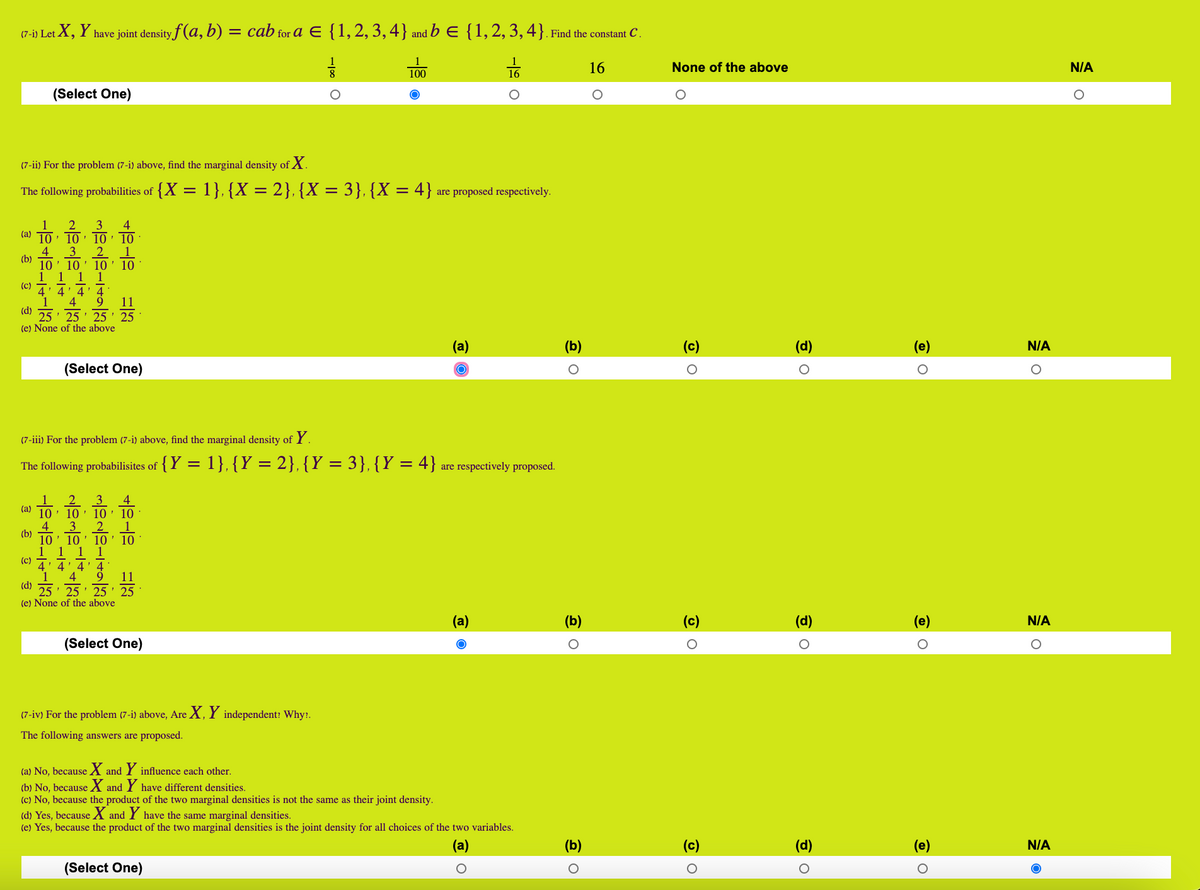Please just answer part (7-IV). just the last part

Extracted text: (7-i) Let X, Y have joint density f (a, b) = cab for a E {1,2, 3,4} and b E {1,2,3,4}. Find the constant C . 100 16 None of the above N/A (Select One) (7-ii) For the problem (7-i) above, find the marginal density of X. The following probabilities of {X = 1},{X = 2}, {X = 3}, {X = 4} are proposed respectively. 1 2 3 · 10' 10 ' 10 10 2 4 3 (a) 1 10 (b) 10' 10 ' 10 1 1 1 1 4' 4' 4 4 (c) 9 11 (d) 25 (e) None of the above • 25 ' 25 ' 25 (a) (c) (d) (e) N/A (Select One) (7-iii) For the problem (7-i) above, find the marginal density of Y. The following probabilisites of {Y = 1}, {Y = 2}, {Y = 3}, {Y = 4} are respectively proposed. 4 10: 10 ' 10: 10 2 (a) 4 (b) 3 10' 10 ' 10 10 (c) T: 4' 4' 4 9 4 25 ' 25 ' 25 ' 25 (e) None of the above 11 (d) (a) (b) (c) (d) (e) N/A (Select One) (7-iv) For the problem (7-i) above, Are X, Y independent: Why:. The following answers are proposed. (a) No, because X and Y influence each other. (b) No, because X and Y have different densities. (c) No, because the product of the two marginal densities is not the same as their joint density. (d) Yes, because X and Y have the same marginal densities. (e) Yes, because the product of the two marginal densities is the joint density for all choices of the two variables. (a) (c) (e) N/A (Select One) -19 O